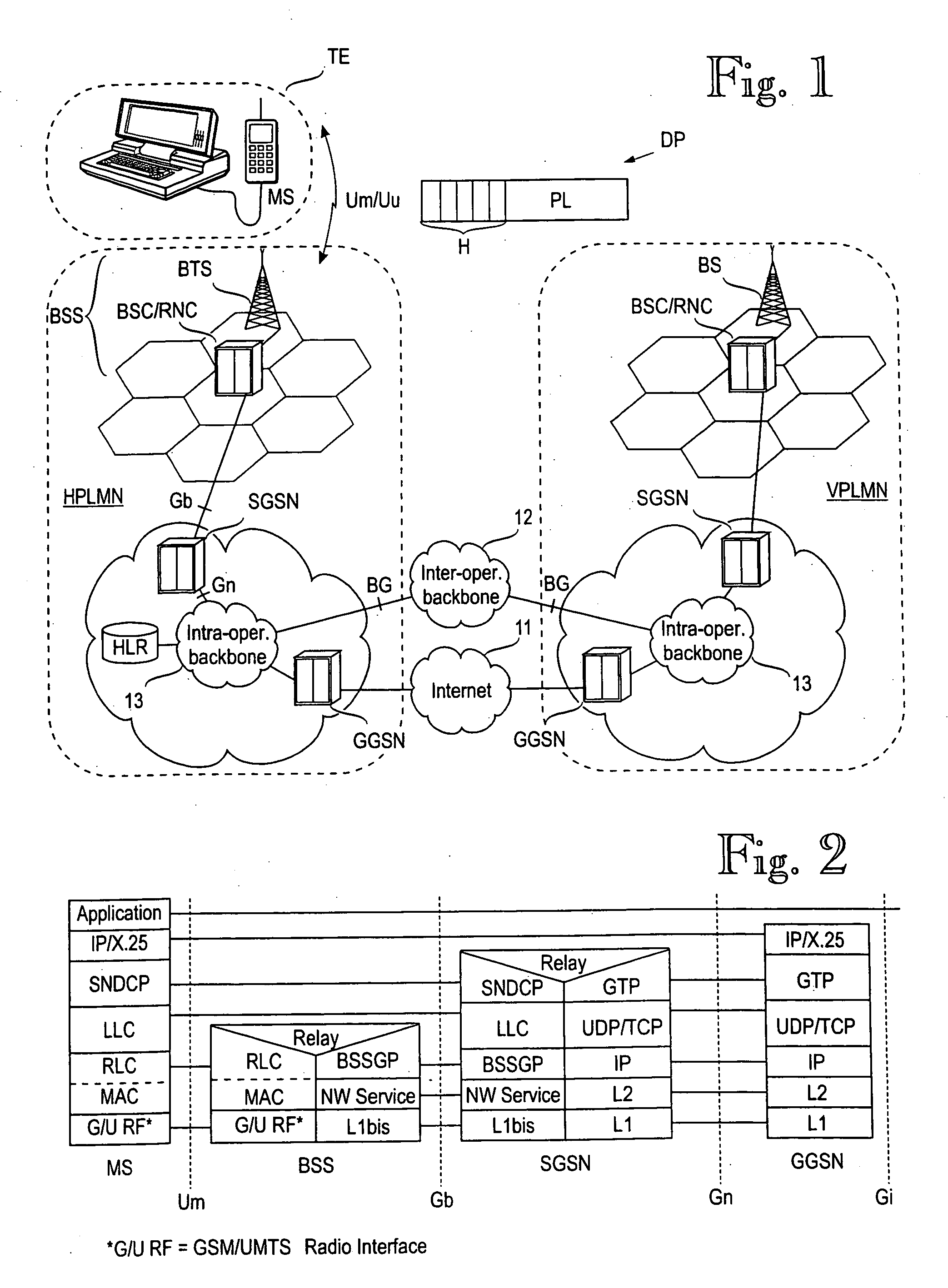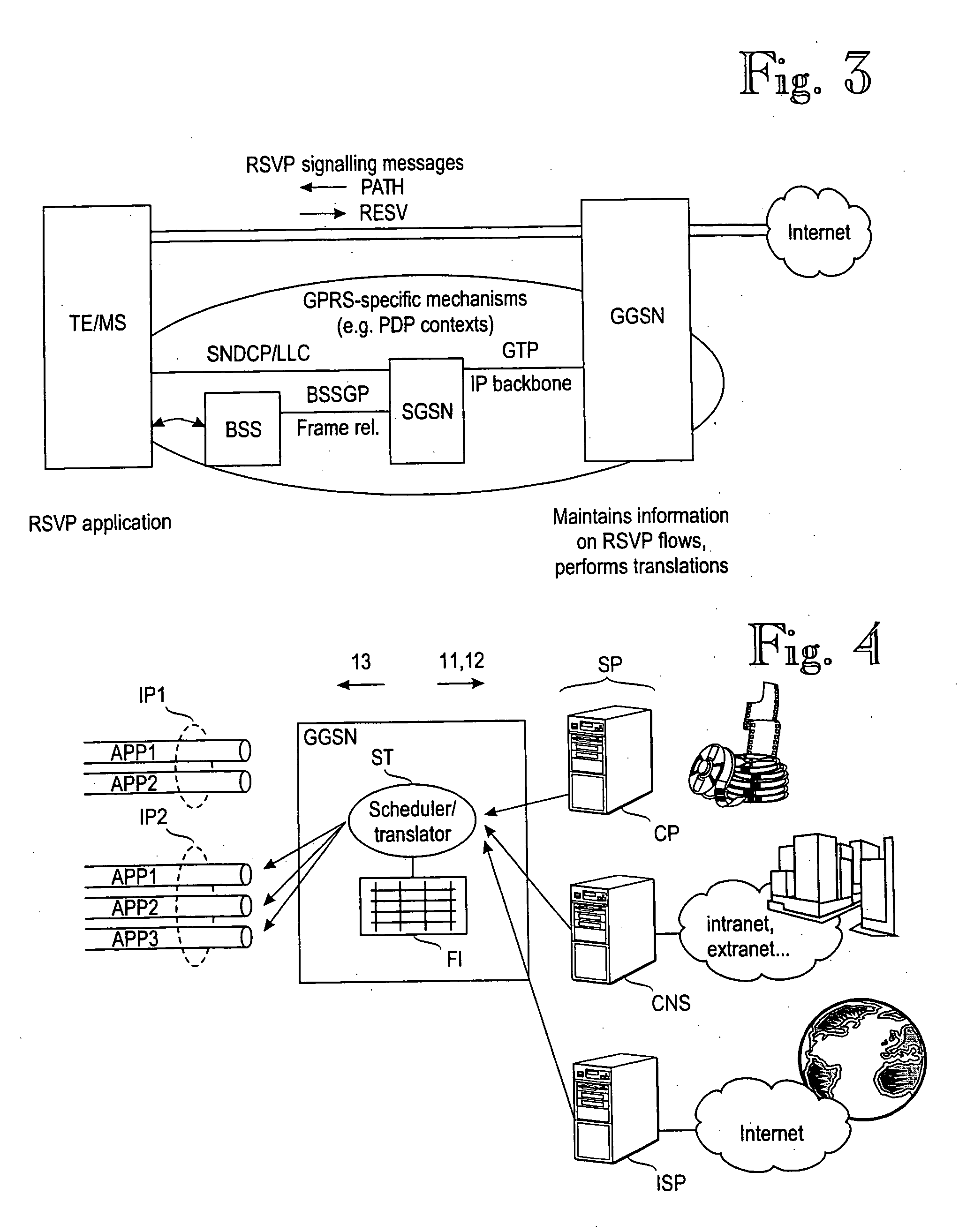Transporting QoS mapping information in a packet radio network
a packet radio network and mapping information technology, applied in the field of mobile communication quality control methods and equipment, can solve the problems of not being able to transform the information needed to perform qos mapping and translation functions, and not being able to solve the problem of this problem
- Summary
- Abstract
- Description
- Claims
- Application Information
AI Technical Summary
Benefits of technology
Problems solved by technology
Method used
Image
Examples
example 1 (
[0033] Example 1 (given as an example of how the MS can decide which GPRS parameter values it chooses for the context).
[0034] Simple Integrated Media Access (SIMA) is a new simple approach presented as an Internet Draft by K. Kilkki, Nokia Research Center, June 1997. Internet Drafts are working documents of the Internet Engineering Task Force (IETF), its areas, and working groups. The SIMA is used as an example of an Internet QoS scheme because it is capable of providing a uniform service concept for different needs from file transfer applications using TCP / IP protocol with loose delay and packet loss requirements to real-time applications with very strict quality and availability requirements. According to the SIMA concept, each user defines only two issues before the connection setup: a nominal bit rate (NBR) and a selection between real-time and non-real-time service classes. The NBR may have eight values from 0 to 7. Mapping of parameters from the SIMA to the GPRS and vice versa...
PUM
 Login to View More
Login to View More Abstract
Description
Claims
Application Information
 Login to View More
Login to View More - R&D
- Intellectual Property
- Life Sciences
- Materials
- Tech Scout
- Unparalleled Data Quality
- Higher Quality Content
- 60% Fewer Hallucinations
Browse by: Latest US Patents, China's latest patents, Technical Efficacy Thesaurus, Application Domain, Technology Topic, Popular Technical Reports.
© 2025 PatSnap. All rights reserved.Legal|Privacy policy|Modern Slavery Act Transparency Statement|Sitemap|About US| Contact US: help@patsnap.com



